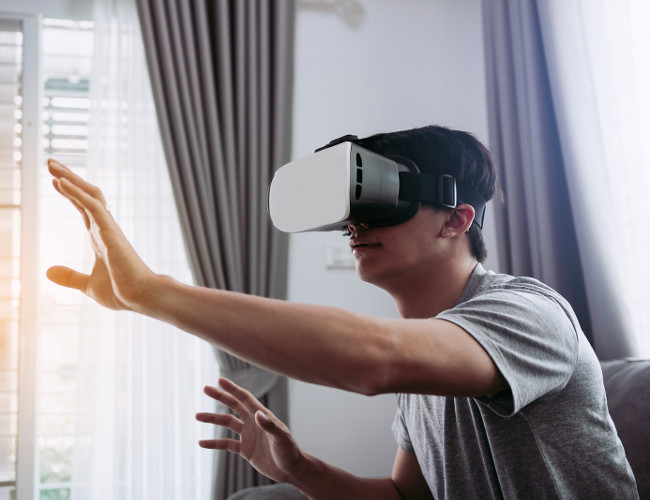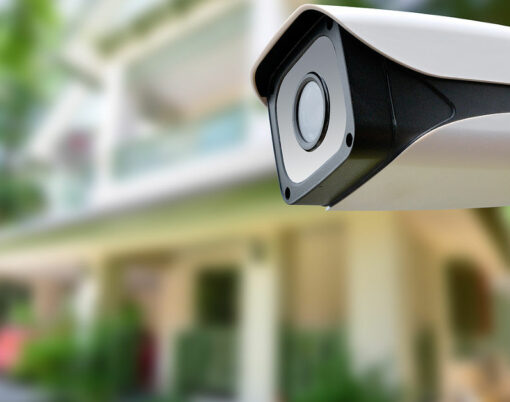The rise of online casinos has always been directly linked to the rise of digital technology. From the first ever online casino launched in 1996 to the ubiquity of mobile broadband connections, the variety and quality of the games on offer to players has risen in direct response to the technology placed in the hands of developers. The sector has grown, using technology, from being a fairly niche interest to becoming a global industry large and complex enough to generate its own library of books and other literature. Whenever a new technology emerges in the realm of digital entertainment or commerce it can be safely assumed that the people who run the huge global online gambling industry will be looking at ways in which that technology can be used to deliver new experiences for players.
The latest technology to make an impact in the wider world of digital communication and entertainment is augmented reality and, when combined with virtual reality, it seems set to take the world of online gambling into a whole new era. A survey carried out by iGaming platform experts BtoBet found that sales of augmented reality glasses in 2017 were worth £900 million and that by 2020 this was predicted to rise to a market share worth a massive £72 billion. Augmented reality and virtual reality are often confused or regarded as interchangeable, but in fact they are two different ways of combining computerised graphics, imagery and gameplay with the real world.

Virtual Reality (VR)
Virtual reality involves the player entering a virtual space by wearing a headset such as the Occulus Rift. This provides a 360 degree view of a virtual environment which shifts and reacts to the tracked movements of the player. The advantages of virtual reality include the immersive nature of the experience and the depth of detail which developers are able to offer when creating virtual worlds. The downside, to date, is the expense of the equipment needed and the intrusive nature of the headset which has to be worn.
Augmented Reality (AR)
Rather than creating a virtual world which the player can experience via highly specialised equipment, augmented reality take the approach of imposing virtual factors such as images into a real world setting. The best and most successful utilisation of augmented reality to date has doubtless been the app Pokemon Go, which involved players ‘hunting’ Pokemon characters through real world environments by holding up devices like smartphones and tablets and being able to ‘see’ the Pokemon in question on the street in front of them. The fact that Pokemon Go was not only massively popular when it was launched in 2016 but also became a huge media sensation points to the likelihood that AR technology – due mainly to the fact that it only uses existing equipment like smartphones – is far more likely than VR technology at this point in time to make a breakthrough to mass use and acceptance.
This reality is underlined by the fact that popular apps which utilise the power of AR technology are already available for people to download and use. Amongst the most impressive and popular of these apps are the following.

Giphy World
Rather than simply sending people a gif they can look at, Giphy World lets you send a 3D animated gif which appears amidst the surroundings of the person receiving it. The fact that you can capture the results on video and share with other friends who have the app emphasises the interactive nature of AR.
Ikea Place
An app which showcases the practical uses which AR can be put to. Rather than wondering if a sofa or chair will look good in your front room before making a purchase, you can hold your phone up and see exactly what the item would look in situ.
Euclidean Lands
An architecture based puzzle and strategy game in which the player manipulates shifting blocks which seem to float against the background of the environment surrounding them.
The last example points the way toward the impact which AR is likely to have on the world of online gambling in the next few years. It plays into the fact that online slots in particular are increasingly adopting the principles of online gaming, using features such as levels, characters and advanced storylines and combining them with high quality graphics in order to create products which appeal to a wider audience than just what might be termed ‘hard-core’ gamblers. Entertainment has always been a key part of the appeal of online slots, but the use of AR will create a whole new level of interactivity, as the reels, buttons, flashing lights and characters that make up the world of the slots appear in the space surrounding the payer in a lifelike, 3D manner.
The game Max’s Quest, which was developed by BetSoft, is a working example of this principle in action. It uses AR to create an interactive game play experience, but at the same builds the game around role playing action adventure features which, at first glance, have very little in common with slots as we currently know them. It also features the kind of multi-player action which has so far played no part in the world of online slots. To date, the social aspect of playing slots has been confined purely to slots tournaments, in which players were aware, via the leader board, of the other players they were competing against. An AR game like Max’s Quest, on the other hand, involves players working together to achieve results, something which brings an emotional and co-operative dimension to online slots which has previously been lacking (leaving aside the emotions generated by a big win, of course).

The rise of AR and VR in the world of online gambling is likely to have two main effects. The first of these is to accelerate the convergence of gaming and gambling which is already taking place and can be seen in the release of slots like Castle Builder which is based on completing levels and building castles rather than simply spinning reels. The second, which leads directly from this ‘gamification’, is a broadening of the demographics of people enjoying online slots.
Survey after survey has shown that slots are the aspect of online casinos which are the most popular amongst female visitors, for example, and the use of AR and, in the future, VR, to up the game play and entertainment factor of particular slots is bound to exaggerate this trend even further. It may be tempting to dismiss AR as just another gimmick that gets in the way of ‘serious’ gambling, but the history of online casinos has taught us that entertainment and accessibility have always been used as ways of growing the business and pulling in more revenue. It’s doubtful that AR will be any different.
Please gamble responsibly (18+ UK) – check age restrictions before participating






















